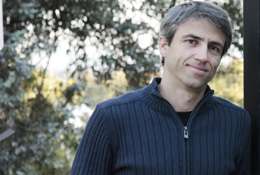Quantum computer leap

(Phys.org) -- The main technical difficulty in building a quantum computer could soon be the thing that makes it possible to build one, according to new research from The Australian National University.
Dr André Carvalho, from the ARC Centre for Quantum Computation and Communication Technology and the Research School of Physics and Engineering, part of the ANU College of Physical and Mathematical Sciences, worked with collaborators from Brazil and Spain to come up with a new proposal for quantum computers. In his research, Dr Carvalho showed that disturbance – or noise – that prevents a quantum computer from operating accurately could become the very thing that makes it work.
“Most people have experienced some kind of computer error in their life – a file that doesn’t open, a CD that can’t be read – but we have ways to correct them. We also know how to correct errors in a quantum computer but we need to keep the noise level really, really low to do that,” he said.
“That’s been a problem, because to build a quantum computer you have to go down to atomic scales and deal with microscopic systems, which are extremely sensitive to noise.”
Surprisingly, the researchers found that the solution was to add even more noise to the system.
“We found that with the additional noise you can actually perform all the steps of the computation, provided that you measure the system, keep a close eye on it and intervene,” Dr Carvalho said.
“Because we have no control on the outcomes of the measurement – they are totally random – if we just passively wait it would take an infinite amount of time to extract even a very simple computation.
“It’s like the idea that if you let a monkey type randomly on a typewriter, eventually a Shakespearean play could come out. In principle, that can happen, but it is so unlikely that you’d have to wait forever.
“However, imagine that whenever the monkey types the right character in a particular position, you protect that position, so that any other typing there will not affect the desired character. This is sort of what we do in our scheme. By choosing smart ways to detect the random events, we can drive the system to implement any desired computation in the system in a finite time.”
Dr Carvalho said quantum information processing has the potential to revolutionise the way we perform computation tasks.
“If a quantum computer existed now, we could solve problems that are exceptionally difficult on current computers, such as cracking codes underlying Internet transactions.”
The research has been published in the journal Physical Review Letters.
More information: Quantum Computing with Incoherent Resources and Quantum Jumps, Phys. Rev. Lett. 108, 170501 (2012) DOI:10.1103/PhysRevLett.108.170501
Abstract
Spontaneous emission and the inelastic scattering of photons are two natural processes usually associated with decoherence and the reduction in the capacity to process quantum information. Here we show that, when suitably detected, these photons are sufficient to build all the fundamental blocks needed to perform quantum computation in the emitting qubits while protecting them from deleterious dissipative effects. We exemplify this by showing how to efficiently prepare graph states for the implementation of measurement-based quantum computation.
Journal information: Physical Review Letters
Provided by Australian National University


















